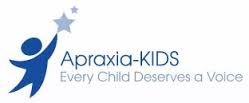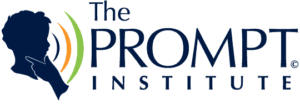A few weeks ago, I was speaking with a mother of a two-year-old working on expressive language needs. She comes with her child twice a week for speech-language therapy. This, really, was not something particularly different from my day-to-day as an SLP. In this moment, however, I confessed that I was wrong.
You see, as the child was gaining more words, I started to notice a few things: inconsistent utterances for the same word attempts (e.g., “more” would be moe, ba, aaa), difficulty combining sounds and a smaller repertoire of consonants and vowels. Couple these indicators with the child’s eating challenges and expressive language needs, and my brain-search landed on childhood apraxia of speech (CAS).
Truth be told, other than hearing these words in graduate school, childhood apraxia of speech was not an area of expertise for my decade and half as a professional. I wanted to be the best SLP for the family (because all families deserve this), and I felt so incompetent moving forward. So, I got to work.
First, I know that trust and transparency are important. So, I let the family know that I would begin searching for information that would be fruitful for our sessions. Initially, I scoured the internet for information, and my efforts gave me a starting point. Since our SLP-village is large, I reached out to peers who were more well-versed in motor speech disorders. Thank goodness for Joan Kuta, an SLP in the Round Rock Independent School District and Marcus Neal, the owner of MLee Therapy. Both are PROMPT certified SLPs. Below are the five pieces of information that has yielded the most outcomes for my efforts with my client and his family:
5 Tips for Working with Childhood Apraxia of Speech
Interactive awareness for oral communication
It’s important to bring attention to the focus of the speech therapy session. “Today we are going to work on the /m/ sound. For the /m/ sound, our lips come together and air comes out of our nose.” Then, you work on the sound in salient, meaningful ways. For example, working on the word “mama” would be meaningful for my client. So, we may play a game with a ball, and the child needs to say “me” when it’s his turn or “mama” when it is Mom’s turn.
Integrate multi-sensory approach
This means that we are going to use visual, auditory and tactile-kinesthetic approaches. So, for example, when working on the /b/ sound, you would model the sound by bringing your lips together (visual), producing the “buh” sound (auditory) and placing your fingers on the child’s lips to give feedback for bringing lips together to produce the sound (tactile).
Intensive service delivery
Research shows the children with CAS are more successful when they receive frequent (3-5 times per week) and intensive treatment. This means speech therapy 3-5 times per week. Also, individual treatment sessions yield better results. Group therapy may be a better as the child improves. In saying this, I will be the first to say that school service delivery models and insurance jurisdictions may not necessarily allow for this. As a result, for my client, at this time, I provide functional homework for parents to do at home to maximize efforts.
Support speech intonation and melody
At times, children with CAS will demonstrate atypical pitch, pauses and stress. Activities, such as singing songs with the target sound, are helpful.
Seek out Resources
American Speech-Language-Hearing Association (ASHA): Childhood Apraxia


Stay tuned for our next post on speech therapy and apraxia. I will provide you a complete routine that has yielded more progress in two weeks than the traditional play-based speech therapy I was doing for the last five months. Here’s to continual learning.





Hi, thank you for your post. Very informative. I’m wondering if you have any have information (e.g., websites) you can share with respect to to evaluation and treatment of bilingual, Spanish-English children for Apraxia? I am a recent graduate student and I’m looking to see if there is specific methodology I should be using when it comes to treating CAS in Spanish. Thank you.
Hi,
Here is some downloadable information on CAS that we put together: (Childhood) Apraxia Causes, Characteristics, and Resources Otherwise ASHA’s information is up to date and filled with links. Childhood Apraxia of Speech
And very little Spanish information exists but Kathryn Kohnert has put some great stuff together: Intervention for Bilingual Children with CAS
Hi, thank you for this informative post.
Do you have any resources on arabic-english therapy and treatments?
Hello, thank you so much for your informative post . I’am a master student and I work on childhood Apraxia of speech ,trying to find a treatment for them ,so I wish that you can help me by providing some references.
Hello, thank you so much for your informative post . I’am a master student and I work on childhood Apraxia of speech ,trying to find a treatment for them ,so I wish that you can help me by providing some references.
I am a recently retired SLP with a 21 month old grandson with ASD and I suspect CAS. He lives across the country and has been receiving speech/language therapy since late November. He communicates primarily by pointing to what he wants, shaking his head for no, nodding for yes, and signing for more and please. He also waves goodbye and hello and has a gesture for where or what. His receptive language has improved as his parents have been intentional about simplifying their language and providing better models and we have been doing therapy via FaceTime. His parents believe he only has an expressive language delay and haven’t heard anything else from his SLP’s that I’m aware. I will be visiting him for two weeks and would like to know if there are specific techniques regarding CAS I can use to aid his progress. I viewed a video demonstrating PROMPT and have only a nodding acquaintance with it.
Hi Cheryl,
Hard call to make even with all of your experience. I think that the best thing that you can do is better define or understand his communication needs when you are there so you can provide the parents with ideas on how to support him. The reason I am saying this is that CAS often gets misdiagnosed, under- and over-diagnosed. Having Autism only complicates things. However, 1) 21 months is still pretty young and it Apraxia or the full degree of Apraxia might not be testable yet. 2) the statistical chance he has both CAS and ASD is pretty low. Not saying he doesn’t have both! It would just be rare. When one disorder exists we have to consider that it might be presenting itself with symptoms of the other. I would read up on true hallmarks of CAS – neck tension, facial groping, vowel distortions, difficulty imitating a sound, difficulty producing the exact same sound twice in a row. Secondly, he may have both but it just might not be the focus of his SLP. Some Early Intervention research points towards working sequentially on communication needs, not simultaneously. You pick the biggest need first.
Hello. I’m a bilingual speech therapist in Cleveland Ohio recently retired due to tongue cancer , there are very few resources for bilingual services here and I was wondering if you provide tele therapy or if you could recommend someone who does where I could refer my bilingual clients ( Spanish-English) I’m specific looking for services for a 2 year old with apraxia.
Hi Anat,
We aren’t currently providing teletherapy but I can recommend Bilingual Therapies out of the Chicago area. They do placements nationally, telepractice, and are really good people. I would reach out to them. https://www.bilingualtherapies.com/